Music
I was standing there on the shore, jeans rolled up, my ankles in the surf.
It was day two of the Rob Bell event and people were surfing.
Yes, surfing.
Rob brings in a couple of surfing instructors and, if you want to, you can rent a board and take a lesson. It's a good time. I watched a lot of people surf for the first time as I stood on the shore ...
watching ...
waiting.

If I were given one word to describe New Zealand singer-songwriter Kimbra, probably best known for singing the female part on Gotye’s “Somebody That I Used to Know,” it would be eccentric.
But that word is based almost entirely on her live show, where — after dimming the lights and playing the theme for The Godfather over the 9:30 Club’s speakers on Tuesday — Kimbra walked onto the stage, decked out in sleek elevator shoes, a fluffy dress laden with glitter and color (which eventually became a tutu), and what looked like pom poms draped over her shoulders. She would’ve looked even more out of place if her drummer wasn’t rocking a sweet high top fade.
But, even though concerts are performances — and as such necessitate an element of spectacle — the music obviously remains the reason people flock to see their favorite musicians.

In case you’re out of the loop, Passion Pit have emerged over the last five years as a pretty big indie-dance-rock group from the Boston area, seamlessly mixing elements of Vampire Weekend, the Beach Boys, and 80s music, among many other sounds and influences. Passion Pit started as a side project of lead singer Michael Angelakos — one that he thought wouldn’t go anywhere and was just for fun — and has quickly gained steam, releasing its second album last summer and performing on Saturday Night Live this past weekend.
On Tuesday they wrapped up three sold-out shows in Washington, D.C., with a triumphant performance, inspiring even the more awkward shyer attendees to move a little. Even the frat daddies who showed up because their girlfriends made them were getting into it.
Angelakos is well aware of Passion Pit’s tendency for infectious catchy songwriting.
“People feel like they're always singing along,” Angelakos told the Huffington Post. “There are always parts to sing along to. It's built into the music.”
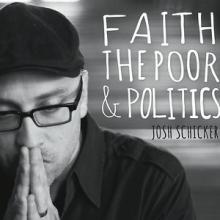
I couldn’t resist: I heard that a singer/songwriter in Atlanta was coming out with an album titled, Faith, the Poor, and Politics. Josh Schicker currently serves as Worship Leader in Mission at North Avenue Presbyterian Church in Atlanta. He’s also an accomplished musician, recording songs and performing at Eddie’s Attic most recently.
Faith, the Poor, and Politics is both catchy and contemplative. It’s spiritual but not in-your-face religious; personal, but not isolated from community. Below, you can read his thoughts on the album and other things in the realm of faith, politics, and culture.

Jens Lekman is a storyteller.
Wait, Jens who? How do you pronounce that?
Jens (pronounced “Yens”) Lekman is a witty, hopelessly romantic Swedish musician from a suburb of Gothenburg.
Lekman was at the 9:30 club in D.C. last Friday — armed with a small acoustic guitar that fuels his unique indie pop style. Occasionally he reached over and pressed the pads of his sampler, cuing thumping bass accompaniment and flurries of strings to compliment his smooth voice, violinist, bassist, drummer, and pianist.
While he may not be on top of the iTunes album charts, Jens (I feel like we’re on a first name basis simply because he was so relaxed and open at the show) is definitely worth a listen, whether it’s at home, in the car, on the go, or — especially — in concert.
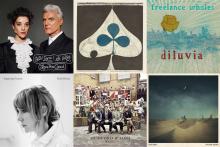
Just in case you missed it (ICYMI), here's a roundup of new music that should be rocking your Spotify playlists.
Beth Orton: Sugaring Season
In her first release since 2006’s Comfort of Strangers, British singer-songwriter Beth Orton created a beautiful record leaning more toward the folk of her signature “folktronica” sound. Orton opts for stripped down, simplified arrangements, drawing mostly on acoustic guitars, strings, and her soft voice to propel each song. The music moves from the melancholy rich guitar sound of Nick Drake incorporating Simon and Garfunkel melodies to more upbeat, lighthearted tunes. The album, recorded in Portland, Ore., is a perfect companion for a drive through countryside of the Pacific Northwest.
Highlights: “Magpie,” “Call me the Breeze,” “Mystery”
Lord Huron: Lonesome Dreams
The brainchild of singer-songwriter Ben Schneider, the music on Lord Huron’s first LP Lonesome Dreams is surprisingly reflective of its album art. (A designer friend of mine once advised me to take any direction I wanted when designing an album cover because they “usually don’t have to make any sense.”) On the grainy cover is a painting of a lone horse rider under the night sky of the desert. Much like the openness of the desert, the songs are expansive and feel like they have depth. The ethereal expanses laden with reverb, sitar, and moon chimes lend themselves well to the picture of the desert sky. Lonesome Dreams feels both antique and refreshingly new. Its themes are large — love, loneliness, and that itch to explore— but it doesn’t at all feel preachy or overzealous.
Highlights: “Ends of the Earth,” “Time to Run,” “She Lit a Fire”
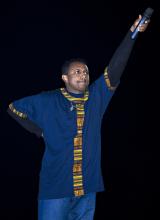
God Girl's New Favorite Thing for Oct. 12, 2012:
Ethiopian Pop StarTeddy Afro
ADDIS ABABA — Pretty much everywhere we've gone in Ethiopia this week, we've heard Teddy Afro's voice.
The 36-year-old Ethiopian singer whose given name is Tewodros Kassahun or ቴዎድሮስ ካሳሁን in Amharic, the national language of Ethiopia, is sometimes referred to as the "Michael Jackson of Ethiopia." But, to my ear at least, he's more the equivalent of, say, Ethiopia's Usher (if he were more political, that is.)
Afro's debut album, 2001's Abugida, spawned several hit singles, including "Halie Selassie" (his tribute to the late Emperor of Ethiopia Haile Selassie I), and "Haile, Haile," which honored Ethiopian Olympic runner Haile Gebrselassie.
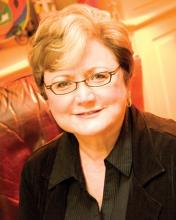
Eileen Guenther, the national president of the American Guild of Organists, reveals behind-the-scenes church struggles in her new book, Rivals or a Team?: Clergy-Musician Relationships in the Twenty-First Century.
Guenther, an associate professor of church music at Washington’s Wesley Theological Seminary and the former organist at Foundry United Methodist Church, talked with Religion News Service about her findings and advice. Some answers have been edited for length and clarity.
Q: You titled your book Rivals or a Team? From your research, which is a better description of most clergy-musician relationships?
A: I would say that rivals may well be the most prevalent, but team is our aspiration.
Q: Why is it so difficult for musicians and ministers to sometimes get along and not have an intense rivalry?
A:. Part of it is lack of understanding of roles. Part of it is control. Each of us is used to kind of being in control in our area, but sometimes if the roles haven’t been clarified, then the control issues become simply that, rather than sorting out, 'OK, who’s going to choose the hymn?' That’s one of the really big issues.

Jazz is an embodiment of creative tension; it is essentially a medium that is expressed through creativity and change. It’s also a wonderful metaphor for what my life often feels like. There is beauty that often emerges from the tensions of life’s unpredictable rhythms. I have never resonated so deeply with this idea than in the last five years since I became a parent.
When I was pregnant with my son Javier, I read stacks and stacks of books on parenting: nurturing your child, building your child’s faith, raising a baby in the city, saving for college, and organic cooking — you name it, I read it. I conducted informal focus groups with all of my parent friends. I was prepared (I think you already know where this is going…). I was so proud of myself, I gave birth to this beautiful boy and I even graduated with (informal) honors from the nursing class at the hospital. So there I am, confidently pushing my newborn in his new stroller out of the Lenox Hill hospital, when I see the nurse smiling at me. I naturally think she is just as smitten with this beautiful baby boy of mine. But then she stops me and with a tone superiority tells me that my baby is backwards in the stroller: “you need to turn him around.” And it was at that moment that I realized I had no idea of what I was doing and that this creative process of raising a child was going to also going to involve a lot of not knowing, unlearning, and a surrendering of what I could not control or anticipate.

Battlestar Galactica—not the first thing you think of while mining the vast array of influences on an indie rock record. Even more surprising might be Carl Sagan’s The Cosmos or the History Channel’s Ancient Alien Theory. But all three shows played vital parts in inspiring Freelance Whales’ newest record Diluvia.
“All three of those shows have an abundance of emotional storytelling that we just found really inspiring,” said Chuck Criss, who plays banjo, bass, synthesizer, glockenspiel, harmonium, acoustic and electric guitar, and provides vocals for the band. “[But] I don't want to give the impression that we made a Bowie sci-fi record.”
While they may not have set out to make another soundtrack to 2001: A Space Odyssey, the sci-fi influences are definitely apparent on Diluvia, particularly in the twitchy electronic sounds that open and close most of the album’s songs as well as the ambient, spacey atmosphere permeating Diluvia. Both are a far cry from the quintet from the Queens’ opening album, Weathervanes (2009), which they described as “layered, textured pop music.”
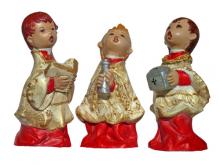
Should the market have so much control over liturgical music?
There is nothing new to this question. Not at all. Now, however, there may be much that is new in discoverng the answer.
Once upon a time in the European West, liturgical music was created by musicians who were supported by the patronage of a noble class.* Byrd, Tallis, you know the gang.
Before then it was the monastic composer (Hildegard, et al) who seemed to rule the charts with their chant. Musicians were supported by the Church and the Wealthy in some way and thus created music for worship.
The old markets, of course, have given way to new markets over the centuries, but throughout the history of the Western marketplace, markets (and the people they represent) have had tremendous say in what music we deem as sacred.
Now, in our post-colonial, neoliberal marketplace, how shall we choose liturgical music?

What if music were ethics?
You know, the art of listening and producing sounds as ethics?
I'm just thinking on the old blog here. I'm preaching next Sunday and I'm thinking about listening and music and how we learn to be good to one another. Somewhere someone wrote "It is better to give than receive."
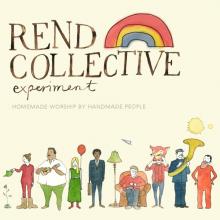
God Girl's New Favorite Thing for Sept. 27, 2012: Northern Ireland's Rend Collective Experiment
I love music. I love Jesus. And I love all things Irish.
So when a friend introduced me to Rend Collective Experiment last year, chances were pretty good that I'd vibe with this band from the North of Ireland (Bangor, to be specific.)
But ... and this was a BIG but ... my musical proclivities, while decidedly ecclectic, generally steer clear of contemporary Christian worship music (especially if it's billed as such.) When it comes to having a musical worship experience, give me Chris Martin and his bandmates, or those other four greying boyos from a little farther south in the Republic of Ireland.
Without putting too fine a point on it, Rend Collective are very much a contemporary Christian worship band. But they aren't what you're thinking.
Neither painfully earnest nor woefully twee. They're fun and funky — earthy, too, in a grab-your-banjo-and-trilby-hat kind of a way.
"High nigh br-eye-n, K-eye"? Come again? Rend Collective and Bart Millard (of the band MercyMe) give us a lesson in how to speak Northern Irish.
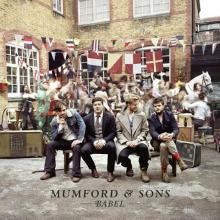
“Are Mumford & Sons as big in America as they are here?” my English friend asked me a year ago over a pint at a pub on High Street in Oxford, England.
“Uh … yea,” I replied, astonished that their popularity was even in question. “They’re huge.”
Turns out that English friend is Marcus Mumford’s cousin, and he eventually got to see how big they are in the states, spending this past summer in Arizona and scurrying over to Colorado for their show at Red Rocks. (I know I’m jealous.)
But has that popularity and success translated into a decent sophomore album? Absolutely. One way to avoid the perilous “sophomore slump” that plagues many musicians and bands these days is to stick to your guns. And that’s exactly what English quartet Mumford & Sons did with their second album Babel.
“The idea was always, ‘If it ain’t broke, why fix it?’” producer Markus Dravs told Rolling Stone.
And that’s almost exactly what audiences get on Babel. It’s as if Mumford took all the good things from their first record, Sigh No More, and channeled them into Babel.
Who blames ‘em? Their foot-stomping, banjo-plucking signature folk-rock sound has sent them to the far corners of the earth and back. It also shot Sigh No More up to platinum status, selling five million copies and nominating the band for two Grammys.

PORTLAND, Ore. — Hip-hop's all the rage at universities and seminaries these days.
Scholars parse its angry and often violent language. They sift out refrains of religious redemption or clever critiques of modern culture. In some traditionally African-American divinity schools, the rise and fall of response and call, old-school black preaching, is giving way to intricately rhyming rap.
Dozens of pop culture books have been written about using hip-hop to evangelize young people, to relate to their lives and bring them into the organized church. But Monica R. Miller, a visiting professor of religion and popular culture at Lewis & Clark College, warns that looking for religion in hip-hop is a risky proposition.
"Seeing isn't believing," she says. Listeners who point to religious words in lyrics and assume their meaning, or those who spend hours trying to discern some artist's systematic theology, may be wasting their time and effort.
Her new book, Religion and Hip Hop, argues that shared vocabulary doesn't equal shared meaning, and religious language sometimes sells rather than saves. In an interview, Miller talks about religion, hip-hop, and whether and how they overlap.

Aaron Weiss reached his arm into his backpack, which was laid atop a swath of Sharpie graffiti tattooed on our table.
Ever since he walked on the stage earlier that night, I was imagining what was in that backpack, which bulged enough that the zipper didn’t close all the way. The bar we were in was dark and loud. It was 1:00 am. Most of the folks who had come to see mewithoutYou had already left for the night
“You’ll get a kick out of this,” he said.
He pulled out a hymn book much wider than it was tall.
“The Sacred Harp” was written across its brown cover in foil-stamped lettering. Weiss began to explain Sacred Harp singing to me, but he couldn’t go into too much detail; it was getting late, and there were a group of men waiting to donate veggie oil to the band — they use it to fuel their tour bus.
Sacred Harp music, I learned later, is sung a cappella with four sections — tenor, alto, treble and bass — forming the boarders of a square. But the singers don’t face out to an audience; they are turned toward the center of the square. The very center, where only one person stands, is the focal point. As our conversation began to drift to the subjects of performance and fame, it seemed fitting for Weiss to be carrying this book.

"We the people, in order to form a more perfect union ..."
I heard these words for the first time in a song when I was a kid. I was pouring a glass of orange juice in the kitchen when I heard it. Bugs Bunny had ended. I was waiting for Fat Albert and the Cosby Kids to begin. There was the familiar refrain of Schoolhouse Rock in between those cartoons.
"As your body grows bigger, your mind grows flowered, it's great to learn 'cause knowledge is power!" And there it was—the Preamble to the U.S. Constitution in song. I learned it and never forgot it.
When I became an elementary school teacher, one of my goals was to teach my students to sing the Preamble.
 Eleven songs in memory of 9/11 from Bruce Springsteen, Neil Young, Suzanne Vega, Moby and Sinead O'Connor, Mark Knopfler and Emmylou Harris, Leonard Cohen, Tori Amos, John Hiatt, U2, and Hunter Parrish (from 2012's Broadway revival of "Godspell").
Eleven songs in memory of 9/11 from Bruce Springsteen, Neil Young, Suzanne Vega, Moby and Sinead O'Connor, Mark Knopfler and Emmylou Harris, Leonard Cohen, Tori Amos, John Hiatt, U2, and Hunter Parrish (from 2012's Broadway revival of "Godspell").
Hello fellow Sojourners!
This is a brief missive for your enjoyment. I just returned from the Wild Goose Festival in Corvallis, Ore.
Yes, Oregon and not North Carolina. You see, in a fit of wisdom, the good people of Wild Goose found a west coast location. I hope it worked well for them because I'm sold on the place.
I wish you could have been there. It was amazing. To tantalize you into attending next year, here (in no particular order) are Nine Good Reasons to Attend The Wild Goose Festival.
1. There are no bugs.
None. Well, some flies, but this is Oregon and not North Carolina and though the nights are chilly and the mornings moreso (I awoke the last morning to see my breath in the air), the sun arose and everything warmed up to make for some of the most beautiful weather you'll ever experience.
2. All the notables are there.
Rachel, Richard (and Richard), Brian, Nadia, Gareth, Bruce, Christian, Amy, Yvette, Hilary, Greg, Steve...So many people to meet and to know.